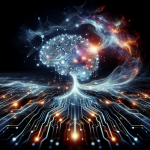
Quantum Machine Learning: Bridging AI and Quantum Computing
Quantum Machine Learning: The Future of AI Meets Quantum Computing
Quantum machine learning (QML) represents an exciting frontier where artificial intelligence meets the power of quantum computing. This integration promises to revolutionize how we process and analyze data with capabilities beyond classical computing methods. In this guide, you’ll gain a clear understanding of quantum machine learning, its prerequisites, practical steps to get started, and troubleshooting tips.
Prerequisites for Exploring Quantum Machine Learning
- Basic knowledge of machine learning: Familiarity with key concepts like supervised learning, classifiers, and neural networks helps grasp QML foundations.
- Understanding of quantum computing principles: Core ideas such as qubits, superposition, and entanglement are essential.
- Programming skills: Experience in Python is beneficial since most QML frameworks and libraries use it extensively.
- Access to quantum computing resources: Tools like IBM Quantum Experience provide cloud access to quantum processors.
Step-by-Step Guide to Getting Started with Quantum Machine Learning
1. Learn the Fundamentals of Quantum Computing
Begin by studying quantum mechanics basics related to computing. Books like “Quantum Computation and Quantum Information” by Nielsen and Chuang offer a comprehensive introduction.
2. Familiarize Yourself with Machine Learning Concepts
Ensure a solid foundation in classical machine learning algorithms and techniques. Websites like Coursera and edX have relevant courses.
3. Explore Quantum Machine Learning Frameworks
- Qiskit (Official site) – IBM’s open-source SDK for working with quantum computers.
- TensorFlow Quantum – Google’s extension to TensorFlow for hybrid quantum-classical ML.
- PennyLane – A library for differentiable programming of quantum computers.
4. Run Your First Quantum Machine Learning Program
Use online tutorials to execute simple QML algorithms, such as quantum support vector machines or variational classifiers, on simulators or real quantum devices.
5. Experiment and Innovate
Develop your own quantum ML models tailored to specific datasets and problems.
Troubleshooting and Challenges
- Limited quantum hardware: Current quantum devices have few qubits and are prone to noise, affecting results.
- Steep learning curve: Quantum theory complexity can be daunting; patience and incremental learning help.
- Simulation constraints: Classical simulators for quantum circuits are resource-intensive and limited to small systems.
Summary Checklist
- Understand core quantum computing and machine learning concepts.
- Set up Python environment with QML libraries like Qiskit.
- Access cloud-based quantum processors or use local simulators.
- Practice running and modifying example QML code.
- Stay updated on emerging research and tools in QML.
For a broader view of quantum technologies, see our post on Quantum Computing for AI: Unlock New Horizons, which complements this tutorial nicely.














